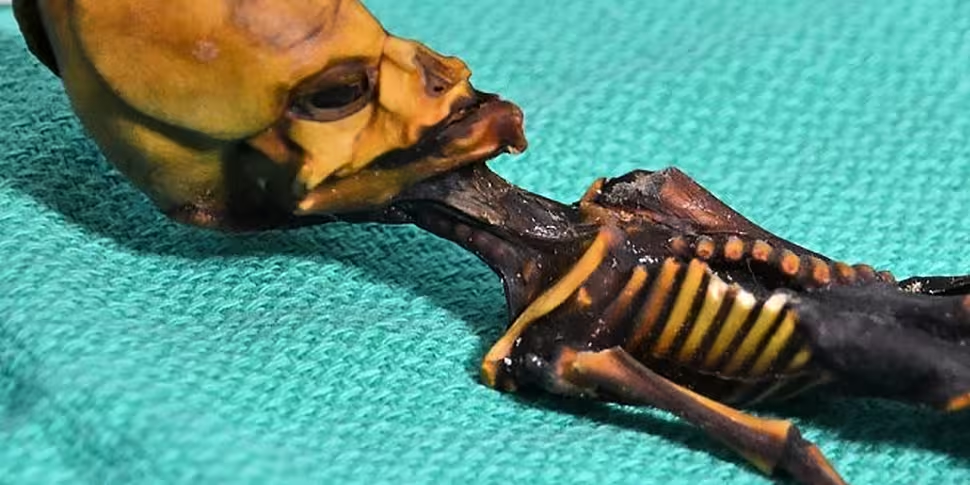Researchers have found that a mummified skeleton, claimed by some to be an alien, was a baby with rare gene mutations.
Named ‘Ata,’ the skeleton was found in a leather pouch buried behind a church in Chile's Atacama Desert in 2003.
The discovery sparked international intrigue – with many at the time believing it to be an extraterrestrial due to the large alien-like head and small body.
However, scientists have now found that it was actually a baby girl with a series of rare gene mutations linked to dwarfism, deformities and apparent premature ageing.
Researchers said the discovery could lead to treatments for people with bone problems and those with badly broken bones.
Child
The study, published in journal Genome Research, found the child was not aged six to eight as previously thought, but was born prematurely and did not live long.
Her deformities had led experts to believe she was years older because of the advanced wear on the bones which they now believe is because of her deformities.
They also found that the very much intact skeleton is not ancient but probably no more than 40 years old.
Researchers used DNA extracted from the bone marrow to carry out a whole-genome analysis which found she had "genetic variations that identified her as being from the Andean region inhabited by the Chilean Chilote Indians."
The skeleton also had only 10 pairs of ribs compared to the usual 12 pairs.
Mutations
Senior author Garry Nolan, professor of microbiology and immunology at Stanford University School of Medicine, said "a relatively short list of mutations in genes known previously to be associated with bone development" were found in genes related to dwarfism, scoliosis, and musculoskeletal abnormalities.
Some were previously known to scientists but others were not.
Researchers said a nearby mine may be to blame for the child's deformities.
"While we can only speculate as to the cause for multiple mutations in Ata's genome, the specimen was found in La Noria, one of the Atacama Desert's many abandoned nitrate mining towns, which suggests a possible role for prenatal nitrate exposure leading to DNA damage," the study said.
Mr Nolan added: "Maybe there's a way to accelerate bone growth in people who need it, people who have bad breaks.
"Nothing like this had been seen before. Certainly, nobody had looked into the genetics of it."
He called for the skeleton, which is owned by a Spanish archaeological collector, to be returned to Chile so it can be buried according to local custom.









